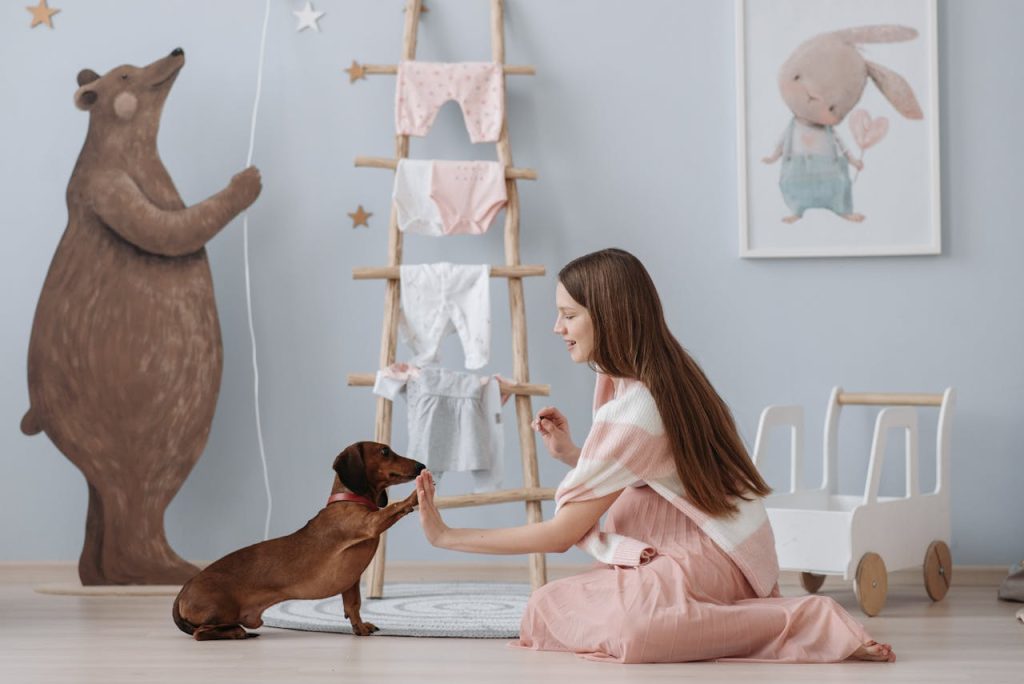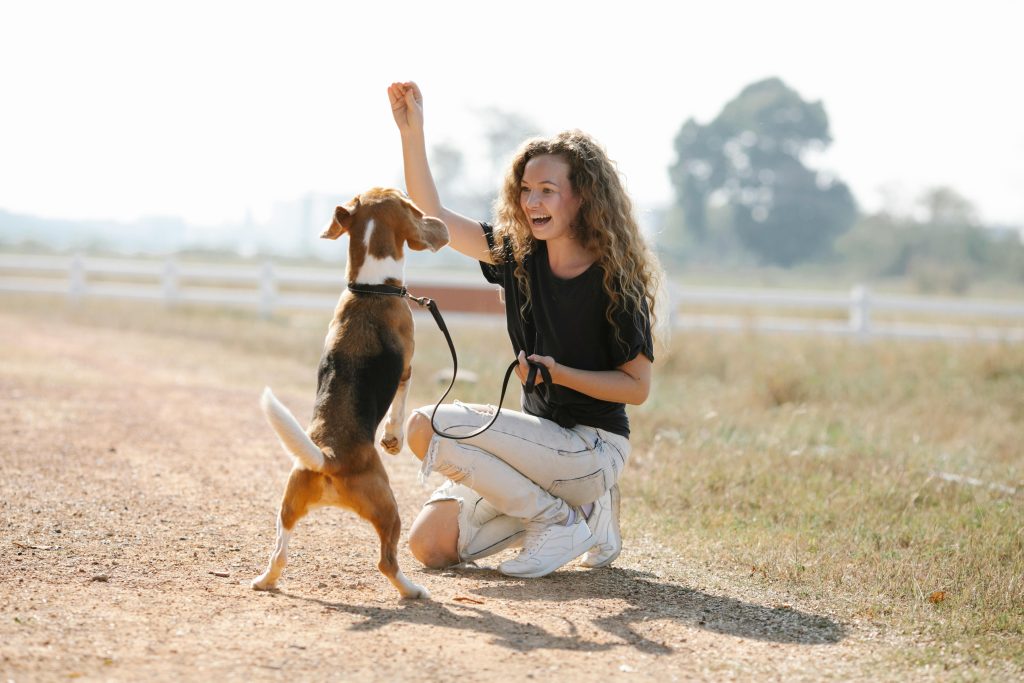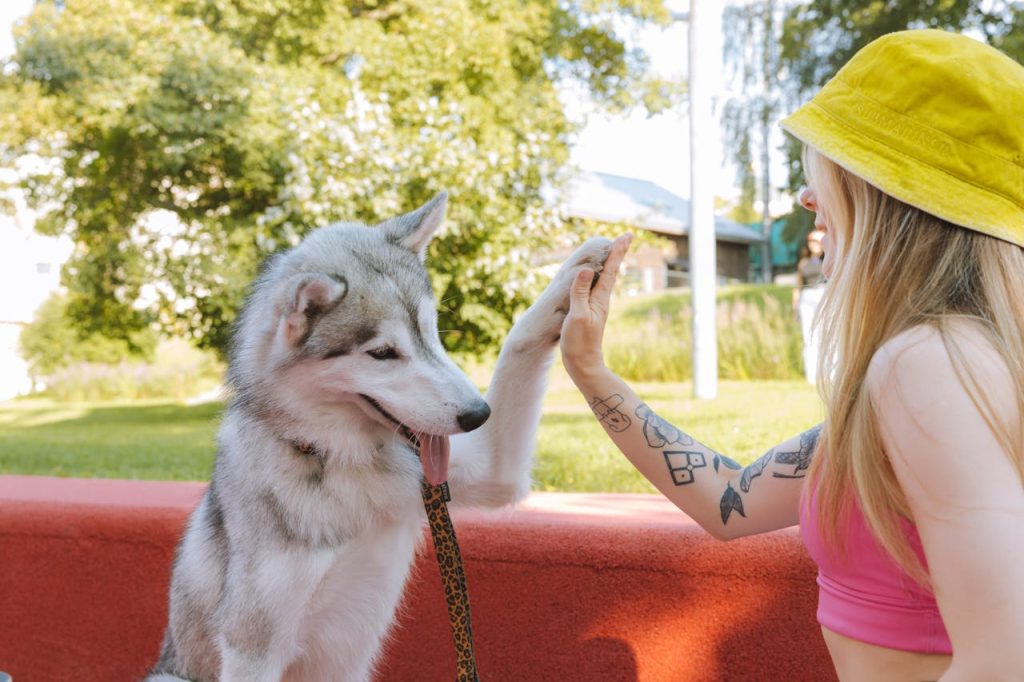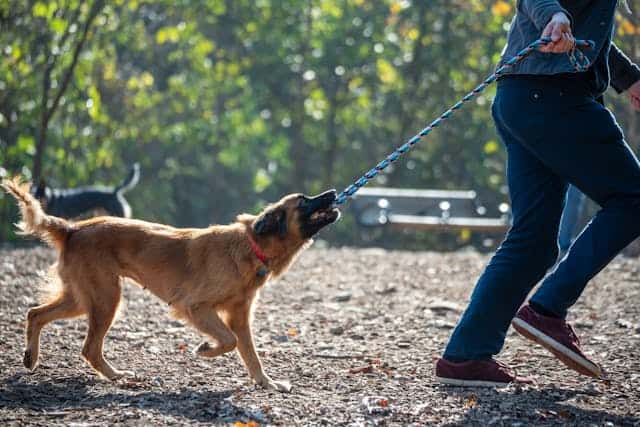My Honest Guide to Choosing the Best Online Dog Course for Your Dog
My Honest Guide to Choosing the Best Online Dog Course for Your Dog. Online dog courses have changed the way I support Savannah’s learning from home(see lowest price).
It’s easier than ever for busy dog owners like me to access clear, expert advice without feeling overwhelmed or lost.
With more owners turning to online training, these classes offer structured lessons and real results even for families with challenging schedules.
I started searching for an online dog course when I realized Savannah needed extra help with her manners and confidence. Many programs deliver hands-on help, step-by-step videos, and support from trainers—all from the comfort of your living room.
These flexible options work for any lifestyle, whether you’re raising a new puppy or working with an older dog. As online dog courses grow in popularity, more owners are sharing how these programs help build a happy, well-behaved companion.
If you’re thinking about getting started with training, you may also want to check out tips on topics like Puppy Nutrition Guide since a healthy diet goes hand in hand with positive results in any online program.
Key Takeaways
Switching to an online dog course has been a practical choice for many families. If you want to support your dog’s training without endless in-person classes, these programs make it possible. Let’s review the biggest lessons I’ve learned from signing up and completing online lessons with my own dog.
Table of Contents

Effective Learning at Home
Here’s what stood out most about following an online dog course:
- Flexibility: I could set sessions around my schedule, not someone else’s.
- Instant Feedback: Video lessons made it easy to replay steps when Savannah or I got stuck.
- Adaptable Pace: Going at our own speed meant less stress and more progress.
Online courses created a positive atmosphere. They made it easier for me to stay calm and focused, which helped Savannah learn faster.
Clear Progress Markers
With a structured online dog course, I always knew what came next. Many top courses offer:
- Pre-set weekly plans
- Checklists and progress tracking tools
- Challenges that keep dogs engaged
It’s motivating to see your dog nail a new cue or trick each week.
Professional Support and Community
I never felt alone during training. Quality online dog courses often include:
- Access to professional trainers for tricky moments
- Peer groups or forums to swap stories, share wins, and ask for tips
- Downloadable materials to keep you on track between sessions
If your dog is extra energetic or strong-willed—like a Boxer—consider reading about traits of Boxer Dogs and picking a course with expert support.
Cost and Long-Term Benefits
Online courses usually cost less than weekly in-person classes. Plus, they often give lifetime access. That means you can revisit challenging lessons months later at no extra charge. Investing in an online dog course gave me tools that went beyond basic obedience—building long-term habits for both Savannah and me.
More Bonding Time
The best surprise was the way training deepened our bond. Setting aside time every day to learn together built trust and made Savannah even more eager to listen. The experience went far beyond learning a sit-stay; it changed the way we connect.
Why Choose an Online Dog Course?
Choosing an online dog course changed the way I approached training with Savannah. It offered a level of comfort and control that I couldn’t find with traditional in-person classes.
The right program fits smoothly into your lifestyle—even when you feel like you barely have time for yourself. Below, I’ll break down why picking an online dog course can be a smart move for busy owners and dogs with every kind of personality.
Convenience and Flexibility for Dog Owners
When life gets busy, it’s stressful trying to make it to scheduled group sessions or finding space in a packed calendar for a private trainer. That’s where online options shine:
- No commutes, no waiting: All lessons are right where you are—in your living room, in the yard, even on the go with your phone.
- Study anytime: Whether it’s early before breakfast or late after work, you decide when to log on.
- Adaptable to real life: Training fits around family time, work, and other commitments. You stay in control.
When Savannah was younger, some days were just unpredictable. Online courses meant I never felt behind, even if I had to shift our routine or hit pause.

Wide Range of Training Techniques and Styles
Not every method fits every dog. The beauty of an online dog course is the access to many training styles, so both you and your dog can grow in the way that suits you best.
- Choose what works: From positive reinforcement and clicker training to specialized courses for shy, reactive, or high-energy pups, the options are wide open.
- Mix and match: It’s easy to blend lessons or switch focus if one technique stalls.
- Explore expert advice: Many courses draw on well-known trainers with years of experience, offering the peace of mind that you’re learning from reliable sources.
If you want to dive deeper into breed-specific support, there are plenty of resources to match different dog personalities. For example, you might want to explore tips in this helpful Boston Terriers guide if your dog is particularly spirited or easy-going.
Personalized Learning Pace for You and Your Dog
Every dog learns at their own speed. Some nail new tricks in a snap, while others—like Savannah—need a slower approach and a bit more encouragement.
- Repeat lessons: Watch the same step as many times as you need for the lesson to stick.
- No pressure: Move on only when your dog is ready.
- Revisit tough skills: Easily go back to challenging concepts for a confidence boost, months or years down the line.
For us, the personal pace was a lifesaver. If Savannah had a rough day, I could scale back and focus on what she knew, then push ahead when she felt ready. This gentle, pressure-free structure made training enjoyable and successful for both of us.
By pairing convenience, variety, and individualized progress, an online dog course becomes a valuable part of every dog owner’s toolkit.
Essential Features to Look for in an Online Dog Course
When I was searching for the right online dog course for Savannah, I quickly realized not all options are created equal. It’s easy to get lost in features but the details matter. If you want your dog to truly benefit—and you want your own training experience to feel smooth and supportive—there are several “must-haves” you shouldn’t skip.
Below are the specific things that made the biggest difference for us and will help you pick a course that fits your dog’s learning style and sets them up for success.
Certified Trainers and Expert Guidance
A high-quality online dog course should be taught by certified trainers. I always double-check a trainer’s background.
Are the instructors certified through reputable organizations like the Certification Council for Professional Dog Trainers (CPDT-KA) or the International Association of Animal Behavior Consultants (IAABC)? True experts give clear, safe, and effective advice, helping build trust from the very first lesson.
Why credentials matter:
- Trainers with formal education in animal behavior know how to spot subtle problems before they turn into big ones.
- Certified pros stay up to date with science-backed methods, so you won’t pick up bad habits from outdated advice.
- Confidence in your teacher helps you relax and focus, making learning more fun for you and your dog.
I found that Savannah made the most progress when I followed a program led by experienced trainers who explained not just the “how,” but also the “why” behind every step.

Interactive Lessons and Real-Life Scenarios
A strong online dog course turns “watching” into “doing.” Look for courses that go beyond passive videos. Interactive lessons—like quizzes, practical homework, and hands-on demonstrations—keep you and your dog engaged.
The most helpful courses include:
- Video walkthroughs that show real dogs learning (mistakes and all)
- Step-by-step guides to practice in your own home
- Real-world scenarios, like practicing loose leash walking in the neighborhood or polite greetings at the door
Courses that offer assignments or homework built around your daily routine help you see progress quickly. For Savannah, practicing in our kitchen and living room (instead of a sterile training center) made lessons feel more real—and results stuck longer.
Sometimes, learning styles need special attention. If you’re navigating particular issues, resources like this Labrador Retriever training guide offer tailored strategies for popular breeds and can be used alongside your main course.
Supportive Online Community and Resources
Training is easier when you have backup. The best online dog courses include a way to connect with others—either through a private forum, regular Q&A calls, or direct chats with trainers.
Community features offer:
- A safe space to ask questions when you get stuck
- Stories and motivation from other dog owners facing similar struggles
- Access to extra resources like printable checklists or troubleshooting charts
When I hit roadblocks with Savannah, advice from other owners and prompt help from trainers made a huge difference. It kept us moving forward on tough days. Solid community support can turn a solo project into a team effort—making training more fun for both you and your dog.
Always check what learning extras are included. Some courses send helpful email reminders, while others provide exclusive access to professional advice or members-only content that keeps you motivated for the long run.
By picking an online dog course with these features, you not only get expert instruction and engaging lessons but also a network of support that makes the entire process more rewarding.
My Experience: Training Savannah Through an Online Dog Course
Stepping into online dog training with Savannah was a big shift from what I’d tried before. I wanted structure, support, and advice I could use in real time. Signing up for an online dog course changed how we worked together and turned daily challenges into chances for both of us to grow.
Initial Setup and Getting Started
Getting set up was easier than I’d expected. The course platform had clear instructions. I just had to create our account, pick a starting level for Savannah, then watch a short video about what to expect.
I liked that I didn’t need special gear—just my laptop, some treats, and Savannah’s favorite toy. Every module was laid out in weekly blocks with video lessons. I’d watch the video, then practice with Savannah for about 15 minutes.
We could rewind, re-watch, or even pause if Savannah lost focus. The lessons made everything simple—no confusing rules or long lectures.
One favorite feature was the downloadable checklist. I printed it out and taped it near her treat jar. This helped keep us on track, and I always knew what step came next. For anyone bringing home a new puppy, I’d also recommend reading a puppy nutrition guide, since energy and health play a big part in successful training.
Overcoming Common Training Challenges
Some skills came easy, but we hit roadblocks too. Savannah was great at sitting and waiting for a treat, but leash walking tested both our patience.
The course tackled common problems with troubleshooting sections. I’d watch a “real-life fix” video if Savannah pulled or barked on our walks. If we were still stuck, I could post a question to the course forum and get trainer feedback.
A few things helped us push through tough spots:
- Repetition: Going back to basics when Savannah forgot a skill.
- Short, fun sessions: Keeping practice under 20 minutes so she stayed interested.
- Small wins: Celebrating every good response—sometimes just calmly walking past another dog—kept us motivated.
I also met other owners with similar struggles. Their advice or just hearing their stories was reassuring. Knowing we weren’t the only ones to have setbacks helped me stay patient and kind, especially when Savannah’s stubborn streak came out.
For dogs like Dachshunds who have their own unique quirks, checking out targeted advice like Essential Tips for Dachshunds might offer extra help alongside the main course.
Celebrating Successes and Progress

Every milestone felt bigger because we earned it together. Savannah learned to stay calm when delivery trucks drove by, sit at open doors, and walk on a loose leash for most of our strolls. The course even included badges and tracking sheets that made it easy to see progress over time.
I set small goals each week, like teaching Savannah to wait for her meals or greet guests politely. When she showed off a new skill, it was more than checkmarks on a list—it was proof that the online dog course was working. We celebrated with play and plenty of praise. The sense of teamwork and trust between us grew every session.
Seeing Savannah more confident and well-behaved felt like the best reward. Our daily life got easier, and I could finally enjoy walks and visits without stress. The changes we made stuck, and training together became a favorite part of our routine.
Is an Online Dog Course Right for You and Your Dog?
Online dog courses are everywhere now, but they aren’t a one-size-fits-all answer for every dog and every owner. Before signing up, think about your dog’s needs and your own routine. Some dogs thrive in a virtual classroom, while others need face-to-face help. Let’s look at how to honestly assess your fit.
Deciding Based on Your Dog’s Breed, Age, and Temperament
Your dog’s breed, age, and personality play a huge role in how well they respond to online learning. For young puppies, online dog courses can give step-by-step guidance through milestones like housetraining, crate introduction, and the basics of manners.
The pause-and-practice format helps when your little one needs frequent breaks. For older dogs or adopted rescues, online programs let you rebuild skills at their pace—helpful if your dog finds new places or loud classes scary.
Breed also matters. Some dogs love working independently and pick up cues from videos and short training bursts. Others get bored or distracted if the lesson isn’t hands-on. For example:
- Eager-to-please breeds (like Golden Retrievers or Boston Terriers) often do well with positive, video-guided training.
- Strong-willed breeds (like Boxers) may need more structure or expert backup, especially if training stubbornness becomes a problem.
If you’re unsure how your dog’s breed and personality will influence their learning style, it’s smart to read up on their background. Curious about whether a Boxer will stay focused or need extra motivation? I suggest checking out traits of Boxer Dogs for deeper insight into breed responsiveness and support needs.
Energy level and temperament also matter. Dogs with high energy or anxiety sometimes respond better when online courses are paired with physical outlets (like a walk before each lesson) and clear, short sessions.
For shy or reactive dogs, training at home through a laptop or phone lets them relax and focus without outside distractions.
Combining Online and In-Person Training
Sometimes, you need a bit of both worlds to help your dog reach their best. An online dog course can give you structure and daily guidance, but some challenges need an expert’s eye in real-time. Problems like extreme aggression, serious fear, or complicated leash reactivity often call for local, professional help.
You can blend the best of both approaches:
- Start online to learn basics and build confidence at home.
- Supplement with in-person sessions if you get stuck or your dog needs direct correction you can’t manage from a screen.
- Join a group class for socialization after learning foundational skills online.
Online dog courses are flexible, and that flexibility can support your real-life needs. Mix and match based on progress. For example, if your Boston Terrier breezes through lessons solo but freezes around other dogs, an in-person group class could help fill that gap.
Reading more about how Boston Terriers behave in different settings can also prepare you for unique breed quirks.
Training is personal for each dog and owner. Use what fits best—combine online tools with in-person expertise when needed. The right mix keeps momentum going and makes training a positive experience for both you and your pup.
Photo by Nataliya Vaitkevich
Frequently Asked Questions About Online Dog Courses
Every dog owner has unique concerns before choosing an online dog course. After going through several programs with Savannah, I discovered that many of us have the same questions—about what to expect, how these courses work, and what’s actually needed for success. In this section, I’ll tackle some of the most common questions I’ve heard from friends, readers, and other dog lovers who want the best for their pets.
What if I’ve never trained a dog before?
Starting fresh can feel overwhelming, but online dog courses are designed especially for people without prior experience. These courses guide you with:
- Simple step-by-step lessons
- Video demonstrations showing real dogs (and owners) learning
- Built-in progress trackers
You can replay lessons and even pause to practice on your own. Most programs offer community support, so you’re never left wondering if you’re “doing it right.” I found trainer Q&As and community boards were a lifesaver when I hit a rough patch with Savannah.
Do I need special equipment or a big space?
No fancy equipment required! Most online dog courses only ask that you have:
- Treats (or a favorite toy)
- A regular leash and collar or harness
- A small, quiet area to practice
You don’t need a backyard or lots of space. I often worked with Savannah in our living room or kitchen. Some exercises might need a hallway or space to walk a few steps, but almost everything can adapt to a small home or apartment.
Can I use an online dog course with a puppy or a senior dog?
Absolutely. These courses work for dogs of all ages. Most offer options divided by age or experience level. For puppies, online dog courses cover basics like potty training and socialization. For senior pups, you’ll find lessons tailored to their pace and needs. Adjust the intensity and session length to fit your dog’s attention span and comfort.
Tip: For older dogs with special nutritional needs, supporting training with the right diet is smart. This puppy nutrition guide offers insights that apply to energetic puppies as well as more mature dogs.
Do online courses help with problem behaviors or just basic obedience?
Many online dog courses include specialized modules for common problem behaviors, not just sit, stay, or come. Topics often cover:
- Barking or whining
- Pulling on the leash
- Jumping on guests
- Separation anxiety
Some courses even dedicate entire lessons to common training challenges, showing troubleshooting tips in real-world scenarios. If you’re running into persistent issues, you’ll usually get step-by-step help, video fixes, and chances to connect with trainers.
What’s better: online dog course or in-person classes?
Both have benefits. An online dog course gives you the flexibility to set your own schedule—plus it’s usually more budget-friendly. In-person classes can help with socialization for dogs who need exposure to new places and people.
Depending on your dog’s personality, you can use online learning for the bulk of your training and supplement with a local class when needed.
If your dog is shy, easily distracted, or anxious in new environments, working online first often builds confidence before trying a group setting.
Will I get support if I get stuck?
Yes, support is a big part of most high-quality online dog courses. You’ll usually have access to:
- Trainer-led Q&A sessions
- Community forums or chat groups
- Support via email or video
Getting feedback on a video of your training or a written question can make a world of difference. You’ll never have to figure things out alone.
How fast will I see results with an online dog course?
Results depend on your dog’s age, temperament, and your consistency. With regular short sessions (10-20 minutes per day), you’ll often see:
- New skills forming within a week or two
- Lasting habits when you stick with the schedule
- Big milestones (like solid recall or better leash manners) after a few weeks to a couple of months
Progress builds over time, so patience helps. Celebrate every small win with your dog and keep things light.
Is online training effective for all breeds and sizes?
I’ve seen online dog courses work with everything from playful Dachshunds to stubborn Boxers and laid-back Golden Retrievers. Most courses suggest ways to adapt techniques based on your dog’s breed, energy, and needs.
For extra breed-specific guidance, look for resources geared to your dog’s personality—like tips for Boxers or Boston Terriers.
Big or small, most dogs thrive when learning at home in a familiar place with their favorite person—you.
Can I train more than one dog at the same time?
Yes! Many online courses encourage you to work with multiple dogs, either in separate sessions or with group exercises.
Keep things positive, reward each dog for their effort, and don’t compete—they’ll all learn at their own pace. It helps to practice core skills one-on-one before adding more dogs together.
What if my dog has special needs or medical conditions?
Always check with your vet before starting any new training if your dog has health concerns. Most online dog courses can adapt for dogs with mobility issues, sensory needs, or anxiety. Choose shorter sessions and use positive reinforcement.
Many course communities include owners facing similar challenges, so you’ll find practical advice and empathy.
By staying curious and reaching out for support when needed, you’ll set yourself and your dog up for training success with any quality online dog course.
Conclusion
The journey with Savannah showed me how much an online dog course can help both dogs and their owners succeed. Training at home gave us room to grow, work at our own pace, and build real-life skills together.
These programs break lessons into clear steps and offer expert support, making every milestone easier to reach.
Online dog courses are a proven way to strengthen your bond with your dog while learning side by side. Whether you’re starting with the basics or dealing with stubborn habits, this style of training can work for any age or breed.
If you’re ready to help your own dog thrive, consider exploring online training for practical skills and lasting results.
Thank you for reading and sharing your time. If you’re looking for more ways to support your dog’s progress, take a look at my favorite dog training tips and guides for extra ideas. What positive change would you most like to see in your dog’s behavior? Your next step could start today.










One Comment